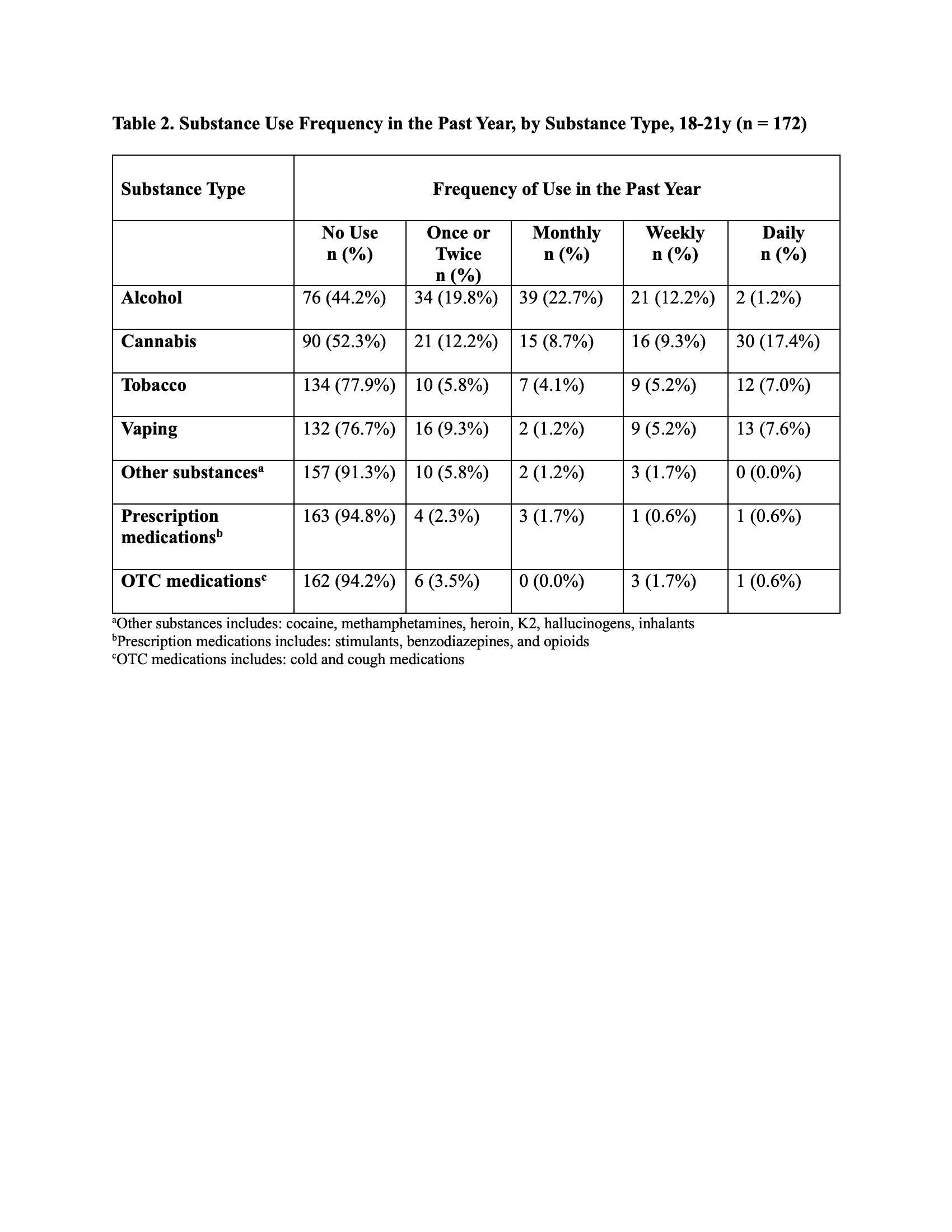Adolescent Medicine
Session: Adolescent Medicine 2
164 - Substance Use Among Youth Presenting to the Pediatric Emergency Department
Friday, May 3, 2024
5:15 PM - 7:15 PM ET
Poster Number: 164
Publication Number: 164.460
Publication Number: 164.460

Madeline H. Renny, MD, MS (she/her/hers)
Assistant Professor
Icahn School of Medicine at Mount Sinai
Scarsdale, New York, United States
Presenting Author(s)
Background: Limited research exists on substance use among youth presenting to emergency departments (EDs). Better understanding of youth substance use can help develop ED-initiated substance use interventions.
Objective: To determine the frequency and type of substance use in youth presenting to our pediatric ED (PED) and identify characteristics associated with high-risk substance use
Design/Methods: We conducted a tablet-based, anonymous, self-reported survey of patients 14-21y presenting to an urban, academic PED from 2/01/23-7/31/23. The survey was a modified version of the Screening to Brief Intervention (S2BI) screening tool, including questions regarding frequency of use for tobacco, alcohol, cannabis, other substances (cocaine, methamphetamines, heroin, K2, hallucinogens, inhalants), and prescription medication (stimulants, benzodiazepines, opioids) and over-the-counter medication misuse. Demographic characteristics (age, sex, race/ethnicity) and attitudes toward ED screening and interventions for substance use also were collected. Frequency and type of substance use was analyzed by age group (14-17y and 18-21y). Logistic regression was used to identify demographic characteristics associated with high-risk use (monthly or more substance use).
Results: Of 446 PED patients approached, 317 (71%) completed the survey. Average age was 17.6y (SD=2.2), 60% were female, 61% were Hispanic. Among 14-17y (n=145), 39% reported substance use in the past year; 26% had high-risk use. Among 18–21y (n=172), 67% reported substance use in the past year; 49% had high-risk use. For both age groups, alcohol (14-17y: 23%; 18-21y: 56%), cannabis (14-17y: 20%; 18-21y: 48%), and tobacco (14-17y: 10%; 18-21y: 22%), were most commonly used, and cannabis was most often used daily (14-17y: 6%; 18-21y: 17%). Within the past year, 19% of 14-17y and 49% of 18-21y used multiple substances. Figures 1 and 2 show substance use frequency by substance type for each age group. In the regression analysis, older age (18-21y) was associated with high-risk use (aOR 3.02, 95% CI (1.84-4.96)). Most patients reported that it was important for youth to be asked about substance use in the ED (74%) and for the ED to offer help for youth with substance use (85%).
Conclusion(s): Youth substance use was common in this urban, academic PED. Alcohol, cannabis, and tobacco were most often used, and many patients reported high-risk use. The majority of youth believed that the ED was an important setting for substance use screening and interventions, highlighting the need for universal ED substance use screening and ED-based, targeted interventions for youth.
.jpg)

